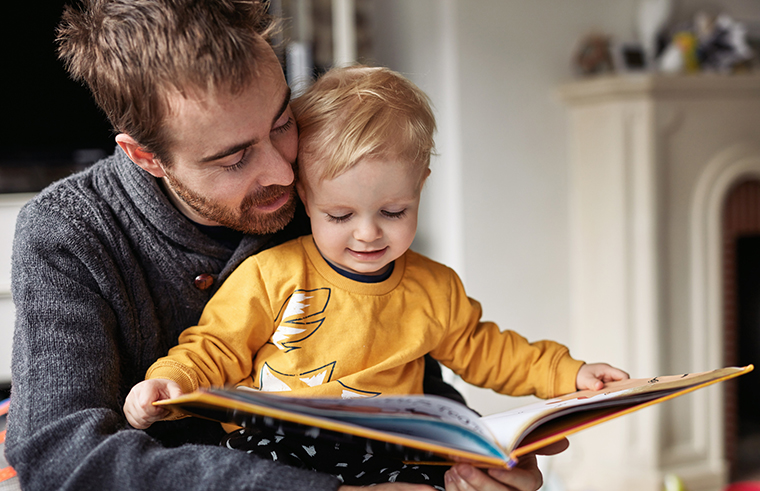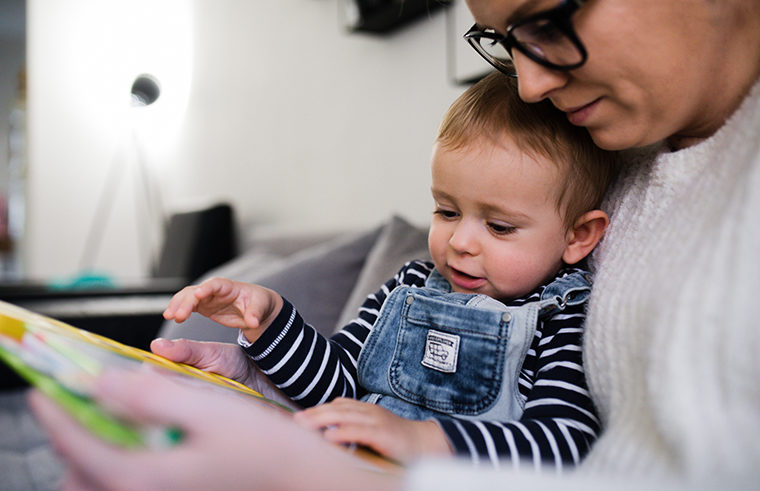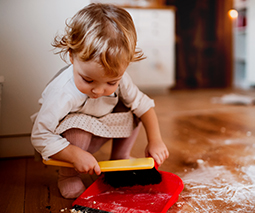Why reading to kids is vital (and 7 ways to be a story time boss!)

Reading stories to your child not only gets them ready for more formal education, it changes their brains (for the better), exposes them to words they may rarely hear in casual conversation and has the potential to boost their development in many other excellent ways.
If you’re keen to refresh your story time skills and know more about why reading aloud should be a non-negotiable, treasured part of your day, lean a little closer to the screen. (And then settle in with a book – which contrary to popular belief is the preferred reading platform for kids!)
1. Start early and surrender
Making time to read a story is like giving your child (and yourself!) a gift. Better still, the benefits of reading together are long lasting, promoting bonding, literacy and language skills.
Victoria’s Education Department tells us that reading to preschool-aged kids super-charges their development in all kinds of ways:
- Reading to 4 or 5-year-old children every day has a significant positive effect on their reading skills and cognitive skills (i.e., language and literacy, numeracy and cognition) later in life.
- Reading to children every day has the same effect on kids as being almost 12 months older.

The ritual of story time is comforting to children who thrive on the security of routine, and some special parent-child time is bolstering for your kiddo, too. Start from your baby’s earliest days and build this cosy and clever time into your life.
2. Be lead by your child
Kids often have elements of their life closely controlled. Encouraging your child to choose the book you read together shows them that you’re interested in their ideas and keen to listen, and also allows them to follow their own interests. Granted, you may end up reading the same story 128 times, but repetition is just one of the ways your child learns, by strengthening neural connections in their growing brains and helping them to focus on different elements of the story with every telling.
“Each time a child hears the book they are picking up new information,” researcher and psychologist Dr Jessica Horst of the University of Sussex says.
“The first time it might just be the story, the second time they are noticing details of description, and so on. If the new word is introduced in a variety of contexts – as happened with those who were read three different stories – children are less likely to focus on the new word.”
3. Snuggle up and encourage your child to get involved
Story time is the perfect time to check in with your child and reconnect physically, with research telling us that kids who have plenty of cuddles as kids go on to be less anxious, happier adults. So snuggle close, pull up a blanket and make the most of this cosy time!
Hold the book together as you read. Encourage your child to help you turn the pages, if they are old enough. Familiarise them with the mechanics of how books work (and also the fact that we sometimes need to be a bit gentle with them!), and teach them to look after their books by putting them away when you’re done. Or reading it again. That’s good too!
4. Point to the words and pictures as you read aloud
Help your child follow the story by pointing out what’s going on in the illustrations, and how they relate to the words. There are lots of opportunities to be led by your child’s curiosity here – and to explore colours, shapes, faces and more.
Reading aloud also exposes your child to lots of words that you might not use in everyday life and this has brilliant and very important benefits.
“Reading takes you beyond the easy way to communicate. It takes you to another world and challenges you,” Dominic Massaro, a professor emeritus in psychology at the University of California explains. He’s been researching the vocabulary used in children’s picture books and says reading to your child will turn them into a language expert.
“You are stretching them in vocabulary and grammar at an early age. You are preparing them to be expert language users.”

5. Don’t rush
Spending five extra minutes reading to your kiddo is not going to slow the rest of your life down much. Take your time as you adventure through the story, setting a steady pace and working to bring the words alive for your child.
“Have fun and be playful,” writes Amy Joyce in a Washington Post piece about how important reading to our kids is. “Use this as an opportunity to ham it up and perhaps create different character voices to really engage the child. Don’t be shy about not perfecting the read aloud — especially with little ones.”
“Don’t feel discouraged if a younger child gets distracted or interrupts story time with questions,” Amy says. “That’s all part of the learning journey and reading process.”
6. Talk about the story
The concepts in the story can live outside its pages, so talk about what’s going on as you read – and once you’ve finished reading you can revisit the narrative as you go about your day. Very often you’ll navigate things with your child that might relate to books you’ve read together. Help your child make this connection and talk these themes through to truly bring the story to life.
7. Do it all over and over!
Read well, and read often! Make story time a trusty foundation of your child’s day, so they learn to return to books to centre themselves – and easily muster up some much-needed snuggly time.
“We’re blown away that kids time and again said the most special time they recall spending with a parent is reading together,” the executive editorial director at Scholastic, Liza Baker confirms.
So, what are you waiting for? Put down this screen and go read!
 Concerned about your child’s speech and language development? Our Parent School experts can help. Click to find out more or book a one-on-one screening call with a speech pathologist.
Concerned about your child’s speech and language development? Our Parent School experts can help. Click to find out more or book a one-on-one screening call with a speech pathologist.









